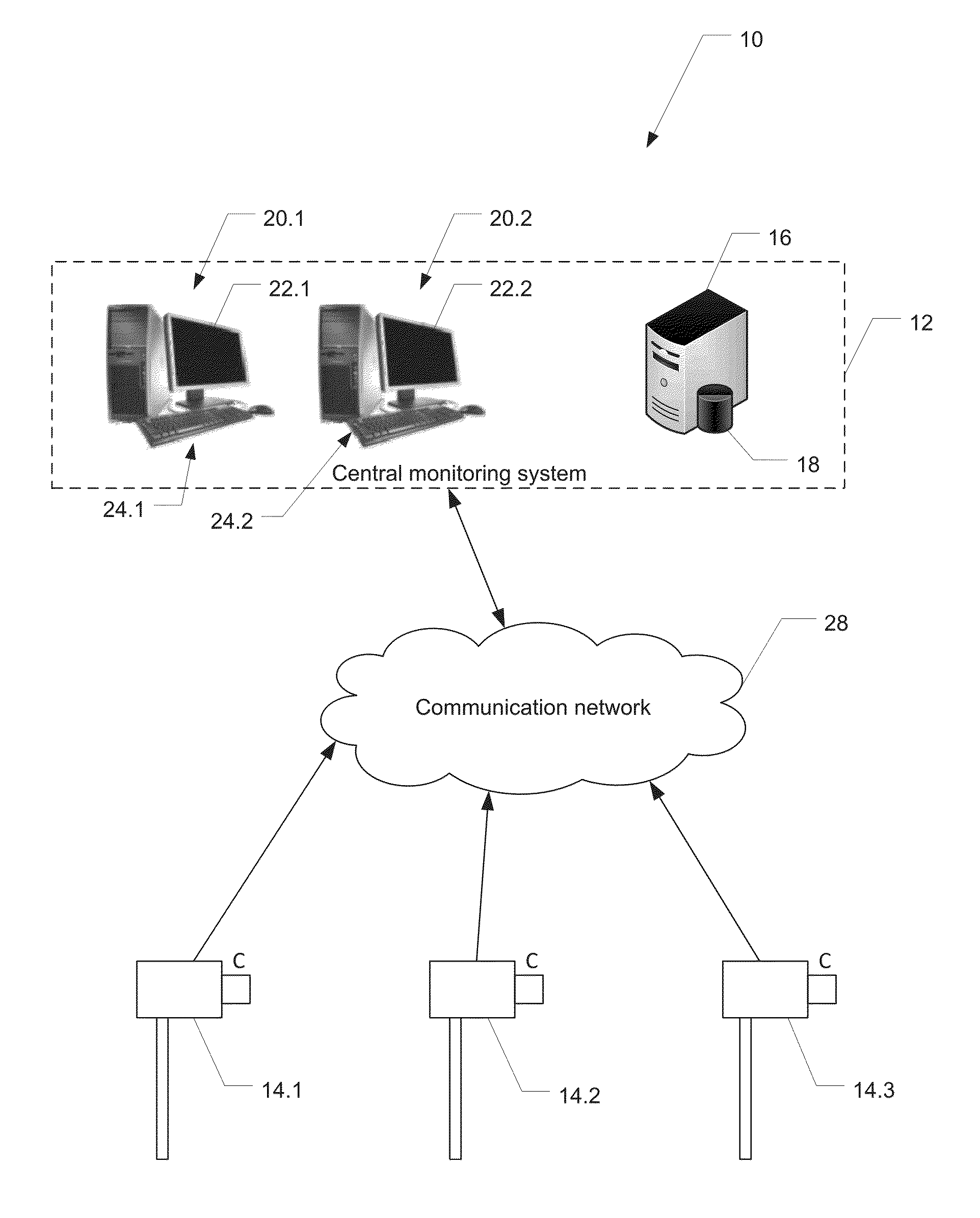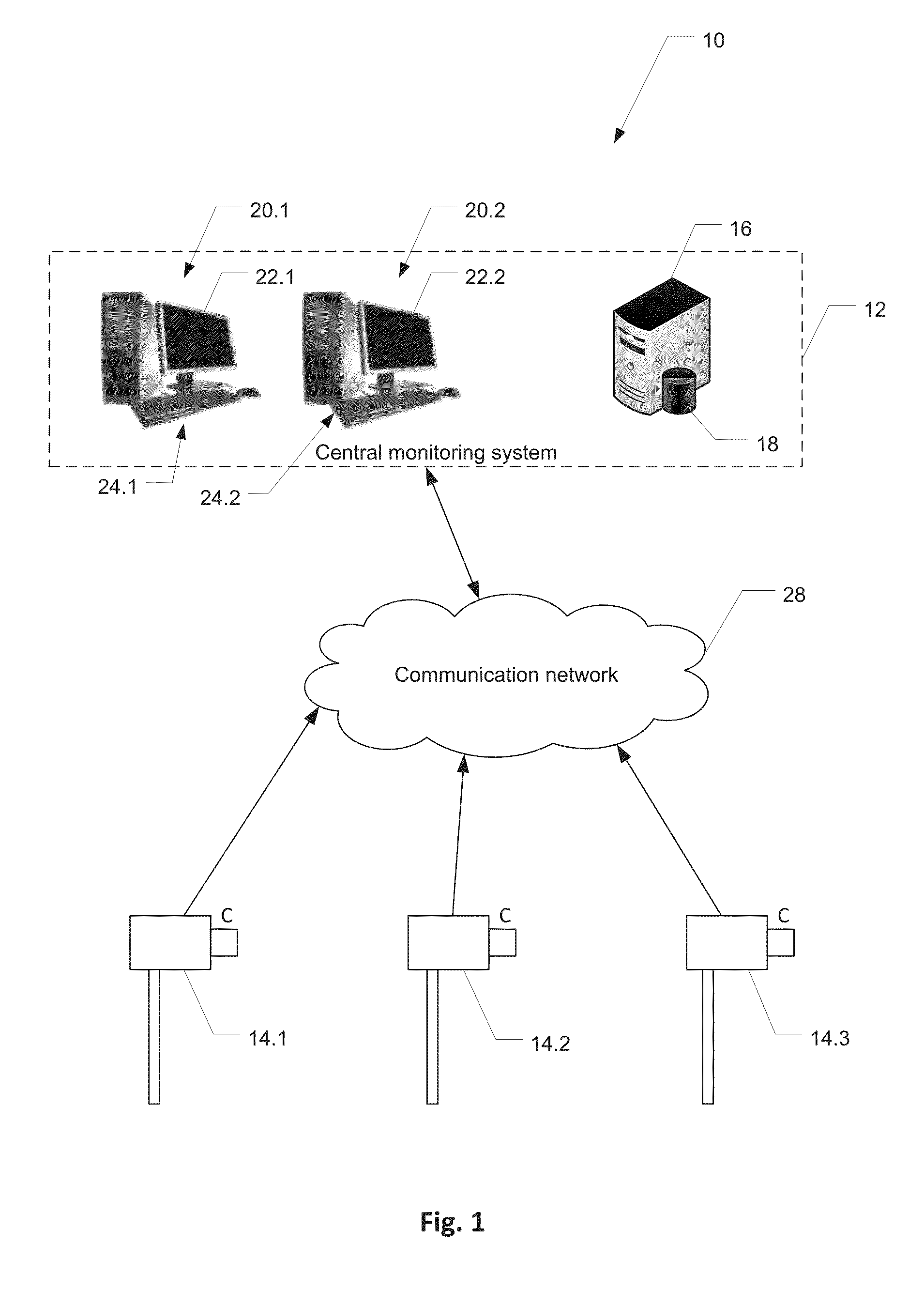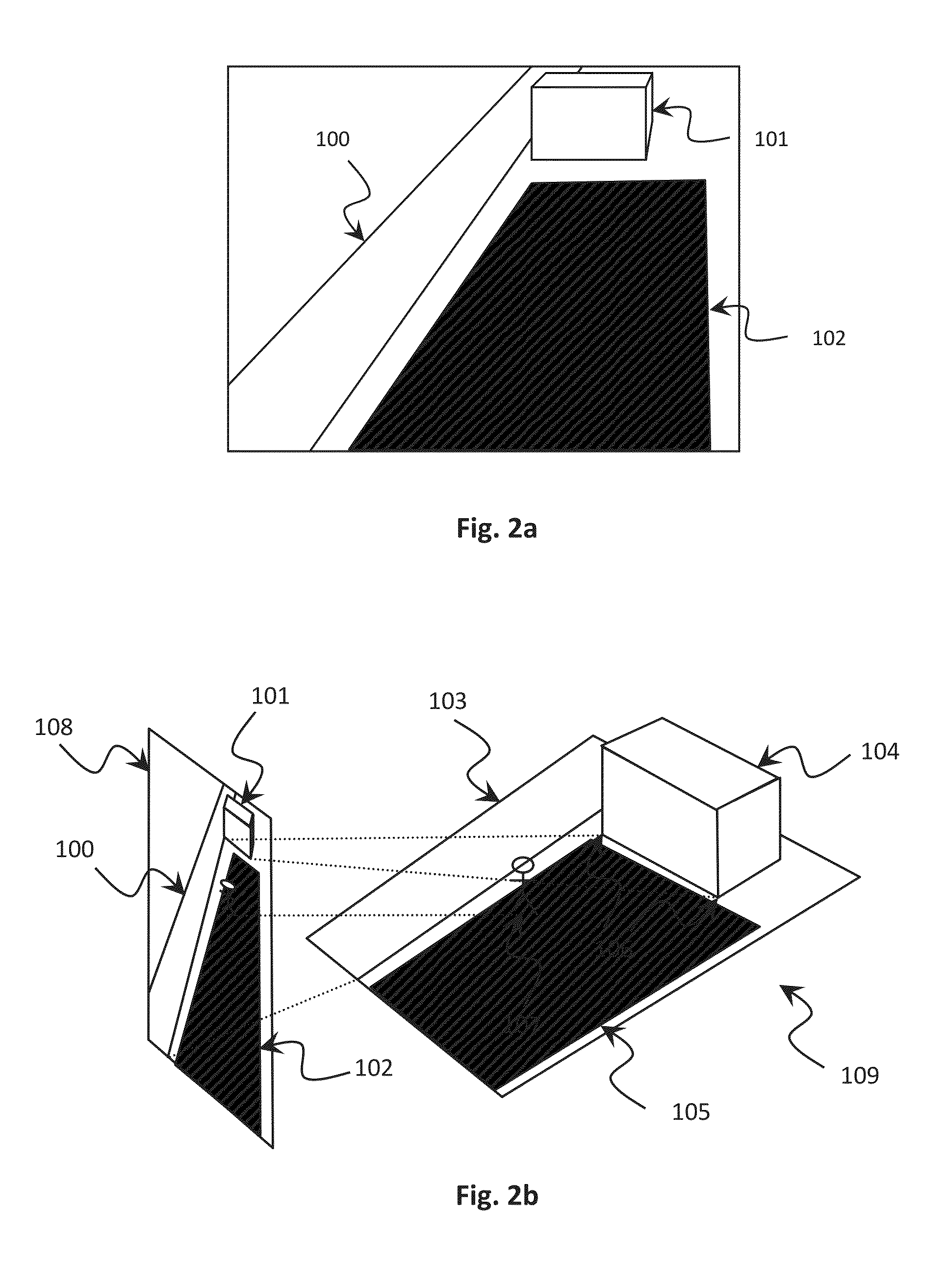Intrusion detection with directional sensing
a directional sensing and intrusion detection technology, applied in the field of intrusion detection with directional sensing, can solve the problems of inability to detect movement as targets, and inability to detect movement at the same tim
- Summary
- Abstract
- Description
- Claims
- Application Information
AI Technical Summary
Benefits of technology
Problems solved by technology
Method used
Image
Examples
first worked example
A First Worked Example
[0106]A working example is now described, to illustrate how an intrusion detection system may operate.
[0107]The system employs a sensing device in the form of a video camera which is used to view and monitor a real scene (in the form of a field of view) such as the three-dimensional scene depicted in FIG. 2b. The image taken by the camera is a two-dimensional projection of that three-dimensional scene onto the image plane of the camera. The camera image is then displayed on a computer monitor or display.
[0108]To use the system, an operator defines a detection area, such as 102 in FIG. 2a, through interactions with a graphical user interface on the computer monitor. This corresponds to a virtual planar detection area in the three-dimensional scene, such as 105 in FIG. 2b.
[0109]There are many ways to calibrate the system, but for illustrative purposes, calibration occurs while a person walks around every part of the three-dimensional planar detection area 105, a...
second worked example
A Second Worked Example
[0114]FIG. 7 shows how the entry and exit from a detection area can be determined. In this Figure, the two-dimensional image 600 consists of picture elements (pixels) 601, and the detection area is defined by the shaded pixels 602. The path 603 of an object passes through the detection area 602, entering it at a first pixel 604 and exiting it at a final pixel 605. The three-dimensional coordinates of pixels 604 and 605 can be computed from the two-dimensional positions in the image (as discussed in detail above), and the three-dimensional coordinates may then be used to determine the component of the three-dimensional distance traveled in the direction specified. Furthermore, any or all other pixels 606 along the path inside the detection area may be similarly transformed and considered. This is particularly important if the path is not straight.
[0115]If the detection area 602 above is narrow enough where the object path passes through, then the pixels 604 and...
PUM
 Login to View More
Login to View More Abstract
Description
Claims
Application Information
 Login to View More
Login to View More - R&D
- Intellectual Property
- Life Sciences
- Materials
- Tech Scout
- Unparalleled Data Quality
- Higher Quality Content
- 60% Fewer Hallucinations
Browse by: Latest US Patents, China's latest patents, Technical Efficacy Thesaurus, Application Domain, Technology Topic, Popular Technical Reports.
© 2025 PatSnap. All rights reserved.Legal|Privacy policy|Modern Slavery Act Transparency Statement|Sitemap|About US| Contact US: help@patsnap.com



